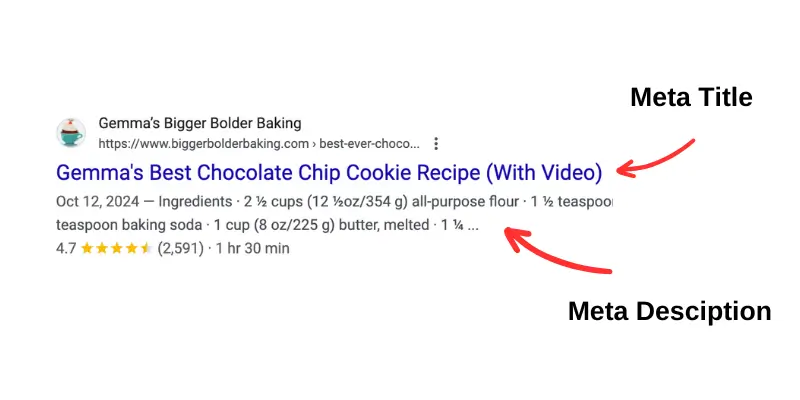Is SEO feeling like a puzzle wrapped in a mystery? Don’t worry, you’re not alone! Even seasoned bloggers sometimes scratch their heads at the jargon. But the good news is that you don’t need to be a tech whiz to get started. This SEO for beginners guide will walk you through the essentials, step-by-step, so you can attract more readers and watch your blog climb the Google rankings. No complex coding or confusing algorithms here – just simple strategies you can start using today.
What is SEO?
Search Engine Optimization (SEO) is the practice of optimizing your website and content to rank higher in search engine results pages (SERPs) and improve the user experience. When people search for something on Google, Bing, or other search engines, they’re presented with a list of results. SEO aims to get your website to appear at the top of that list, increasing visibility, attracting more organic traffic, and ensuring that users find the information they’re looking for easily and quickly.
1. Keyword Research: Uncovering What Your Readers Are Searching For
Keywords are the words and phrases people type into Google when they’re looking for information. By strategically using these keywords in your blog posts, you help Google understand what your content is about and show it to the right people.
Why Keyword Research Matters
Imagine you’ve written an amazing blog post about making the perfect chocolate chip cookies. If you don’t use relevant keywords, someone searching for “best chocolate chip cookie recipe” might never find your post, even if it’s the best one out there!
Tools to Make Keyword Research a Breeze

- Ubersuggest: This free tool lets you enter a keyword idea (like “chocolate chip cookies”) and see a whole bunch of related keywords, how many people are searching for them, and how difficult it is to rank for them.
- Google Keyword Planner: This tool, part of Google Ads, gives you insights into search volume and helps you discover new keyword ideas. You don’t need to run ads to use it!
The Power of Long-Tail Keywords
Think of long-tail keywords as more specific versions of your main keywords. For example, instead of just targeting “chocolate chip cookies,” you could target “easy chocolate chip cookie recipe for beginners” or “chewy chocolate chip cookies with no brown sugar.”
Why are long-tail keywords so great?
- Less competition: It’s easier to rank for them.
- More qualified traffic: People searching for these specific terms are more likely to be interested in your content.
Example:
Let’s say your blog is about sustainable living. Here are some long-tail keywords you could target:
- “zero waste tips for beginners”
- “how to compost in a small apartment”
- “DIY reusable grocery bags”
Putting Ubersuggest to Work
- Enter your seed keyword: Start with a broad term related to your topic (e.g., “blogging”).
- Explore the results: Ubersuggest will show you related keywords, search volume, and SEO difficulty.
- Refine your search: Add modifiers to find more specific long-tail keywords (e.g., “blogging tips for beginners,” “how to start a blog”).
Key Takeaways
- Don’t get hung up on finding the “perfect” keyword right away. Focus on relevance and user intent.
- Even basic keyword research can make a big difference in your blog’s visibility.
2. On-Page Optimization: Sending the Right Signals to Search Engines
Think of on-page optimization as giving your blog posts a clear roadmap that search engines can easily follow. Here’s how to do it:
Title Tags and Meta Descriptions: Your First Impression

When your blog post appears in search results, the title tag is the big blue link, and the meta description is the short text underneath. These are your chance to grab a reader’s attention and convince them to click!
- Title Tag Tips:
- Keep it concise (around 60 characters).
- Include your primary keyword.
- Make it compelling and click-worthy.
- Meta Description Tips:
- Expand on your title tag (around 160 characters).
- Highlight the key benefits of reading your post.
- Include a call to action (e.g., “Learn more”).

Headings: Organizing Your Content
Headings (H1, H2, H3, etc.) aren’t just about making your text look nice. They help search engines understand the structure and hierarchy of your content. Plus, they make your posts easier for readers to skim.
- Use headings to break up your text and create a logical flow.
- Try to incorporate relevant keywords in your headings, but don’t force it.
Image Optimization: More Than Just Pretty Pictures
Images make your blog posts more visually appealing, but they also play a role in SEO.
- Alt text: Add descriptive alt text to your images to help search engines understand what they’re about. This is also important for accessibility.
- File names: Use descriptive file names (e.g., “chocolate-chip-cookies.jpg”) instead of generic ones like “IMG1234.jpg.”
- File size: Compress your images to improve your website’s loading speed.
Key Takeaway
On-page optimization is all about the details! By paying attention to these elements, you’ll make your blog posts more appealing to both readers and search engines.
3. Content Quality: It’s Not Just About Keywords
You could sprinkle your blog post with all the right keywords, but if your content isn’t valuable and engaging, it won’t do well in the long run. Here’s how to create content that both readers and search engines will love:
Satisfying Search Intent
When someone types a query into Google, they have a specific intention in mind. Your content needs to fulfill that intention.
Example:
Let’s say someone searches for “how to make sourdough bread.” A truly helpful post would be titled something like “Sourdough Bread for Beginners: A Step-by-Step Guide” and include:
- Clear instructions for creating a starter.
- Detailed kneading techniques.
- Troubleshooting tips for common problems.
Readability Matters
No one wants to wade through a wall of text. Make your content easy to digest by:
- Using headings and subheadings to organize your thoughts.
- Breaking up long paragraphs into shorter ones.
- Adding images and videos to illustrate your points.
- Using bullet points and lists to present information concisely.
Avoid Thin Content
Thin content provides little value to the reader. Here are some examples:
- A recipe post that only lists ingredients with no instructions.
- An informational post with only a few vague sentences.
Key Point
Write for your readers first. If your content is genuinely helpful and engaging, search engines will take notice!
4. Technical SEO: The Behind-the-Scenes Boost
Don’t let the word “technical” scare you away! These are simple tweaks that can make a big difference in how search engines view your blog.
Site Speed: A Need for Speed
In today’s fast-paced world, no one wants to wait for a slow website to load. A speedy site keeps your readers happy and improves your search ranking.
Tools to Test Your Site Speed:
Easy Ways to Speed Up Your Site:
- Optimize your images: Compress them before uploading.
- Choose a fast web hosting provider.
- Avoid using too many plugins.
Link Building: Your Blog’s Popularity Contest
When other websites link to your blog (backlinks), it’s like a vote of confidence. Search engines see these links as a sign that your content is valuable and trustworthy.
Focus on Quality, Not Quantity:
A few links from reputable websites are much more valuable than tons of links from spammy or irrelevant sites.
Beginner-Friendly Link Building Tactics:
- Guest posting: Write high-quality articles for other blogs in your niche.
- Resource page outreach: Find pages that list helpful resources and suggest your blog post.
- Social media promotion: Encourage social sharing to increase visibility
SEO No-Nos: Avoiding Penalties
Search engines can penalize your site if you use shady tactics to try and game the system. Here’s what to avoid:
- Keyword stuffing: Cramming your content with keywords in an unnatural way.
- Buying links: Paying for backlinks is a big no-no.
- Cloaking: Showing different content to search engines than what your visitors see.
Key Point
Focus on creating excellent content and building genuine authority, and your blog will naturally attract backlinks over time.
Your SEO Journey Starts Now!
Let’s recap the key ingredients for creating a search-engine-friendly blog:
- Keyword research: Understand what your audience is searching for.
- On-page optimization: Craft compelling title tags, meta descriptions, and headings.
- High-quality content: Provide valuable information and make it easy to read.
- Technical SEO: Ensure your site loads quickly and is easy to navigate.
- Link building: Earn backlinks naturally by creating shareable content.
SEO is an Ongoing Process
Don’t get discouraged if you don’t see results overnight. SEO is a long game, but consistent effort pays off. Keep learning, keep improving, and watch your blog grow! If you’re not seeing the traffic you expect, check out our guide to 13 Reasons Why Your Blog Isn’t Getting Traffic (& How to Fix It!).
Ready to Take Action?
- Choose an older blog post.
- Analyze it with your newfound SEO knowledge.
- Make one improvement today!
SEO for Beginners FAQ’s
Do I need to hire an SEO expert?
Not necessarily! You can achieve a lot with basic knowledge and effort.
How long does it take to see results from SEO?
It can take several months, so be patient and consistent!
What if I’m completely new to blogging?
We have a comprehensive guide to help you get started!









No Comments
Leave a comment Cancel